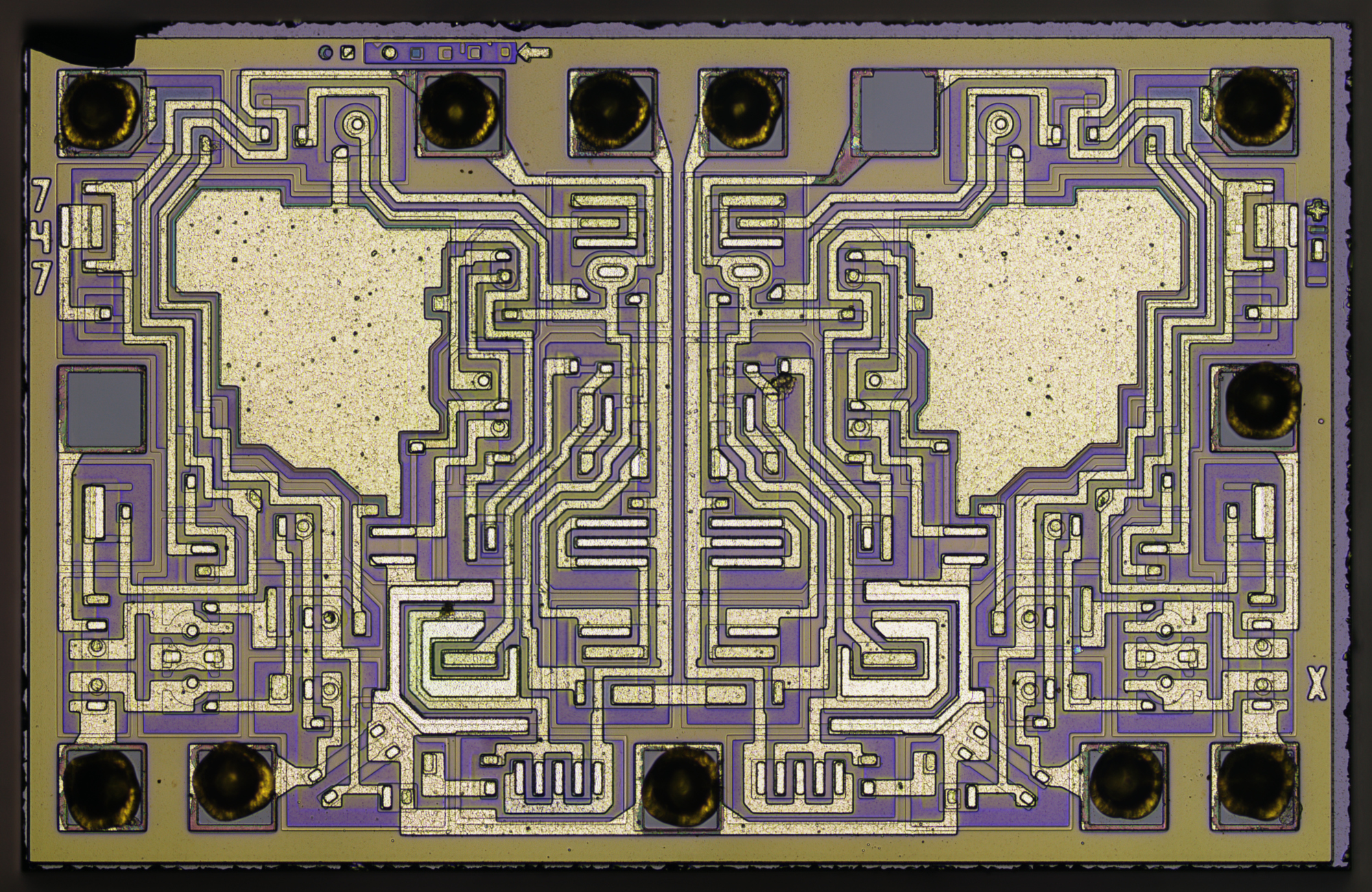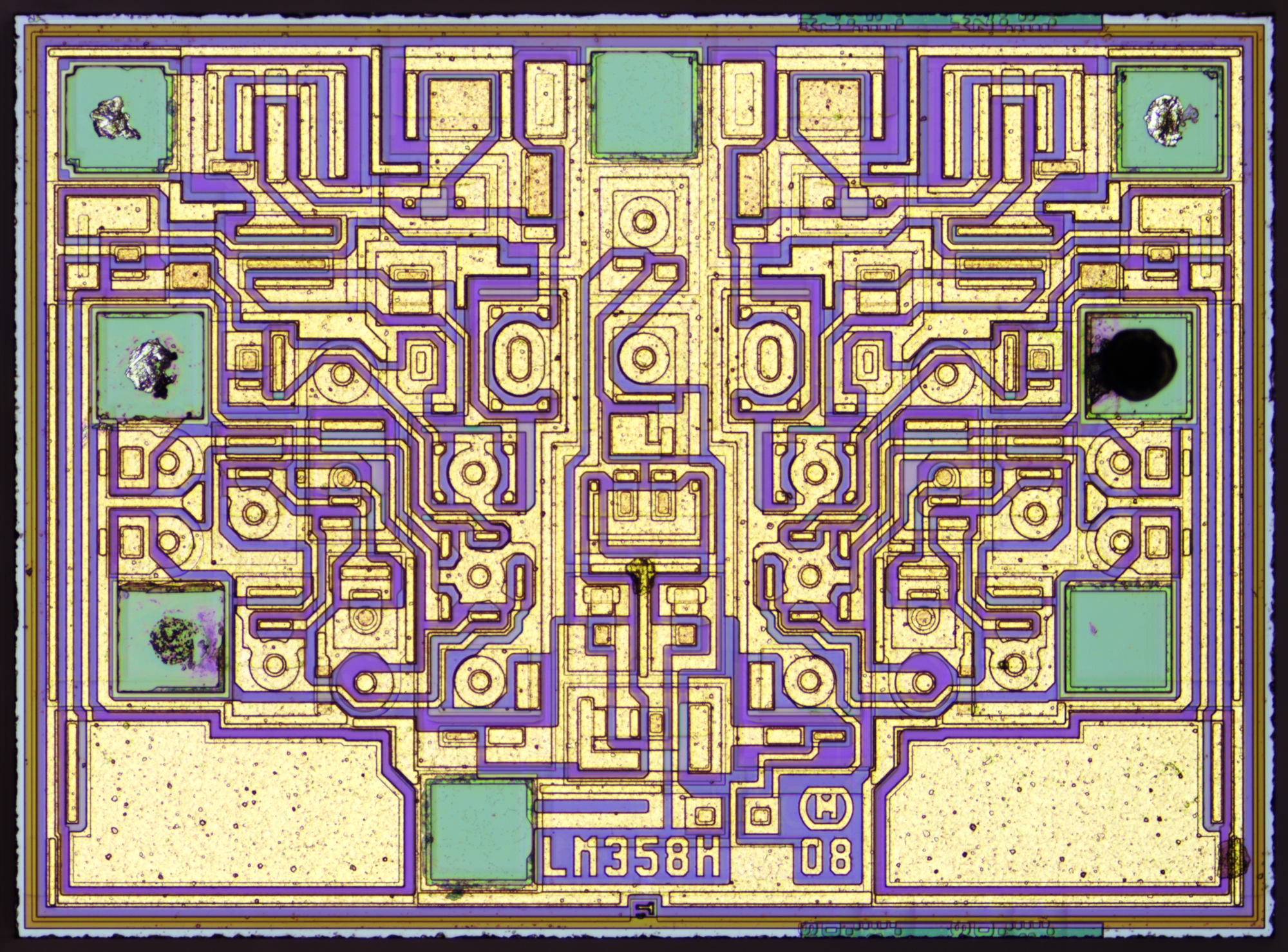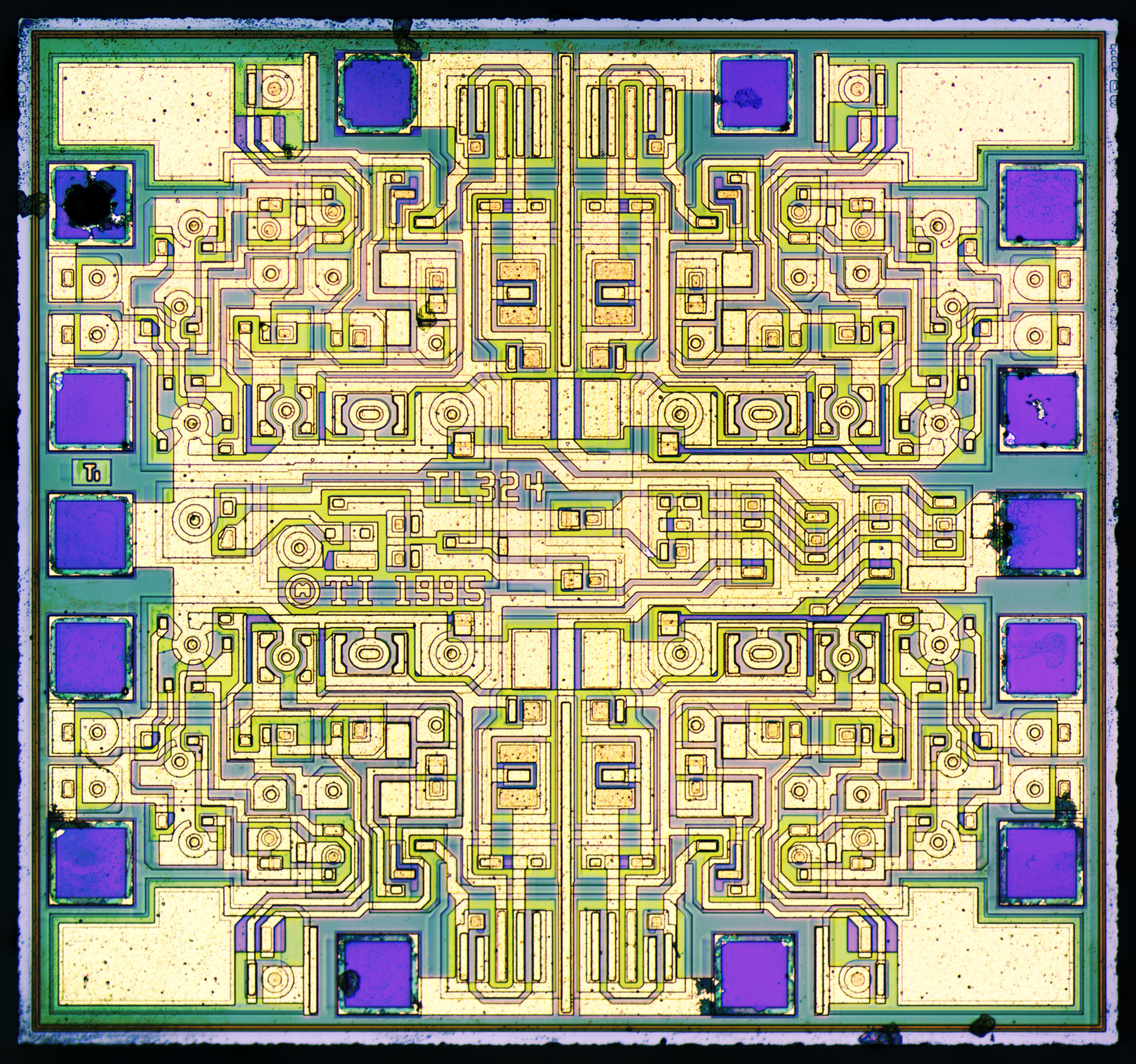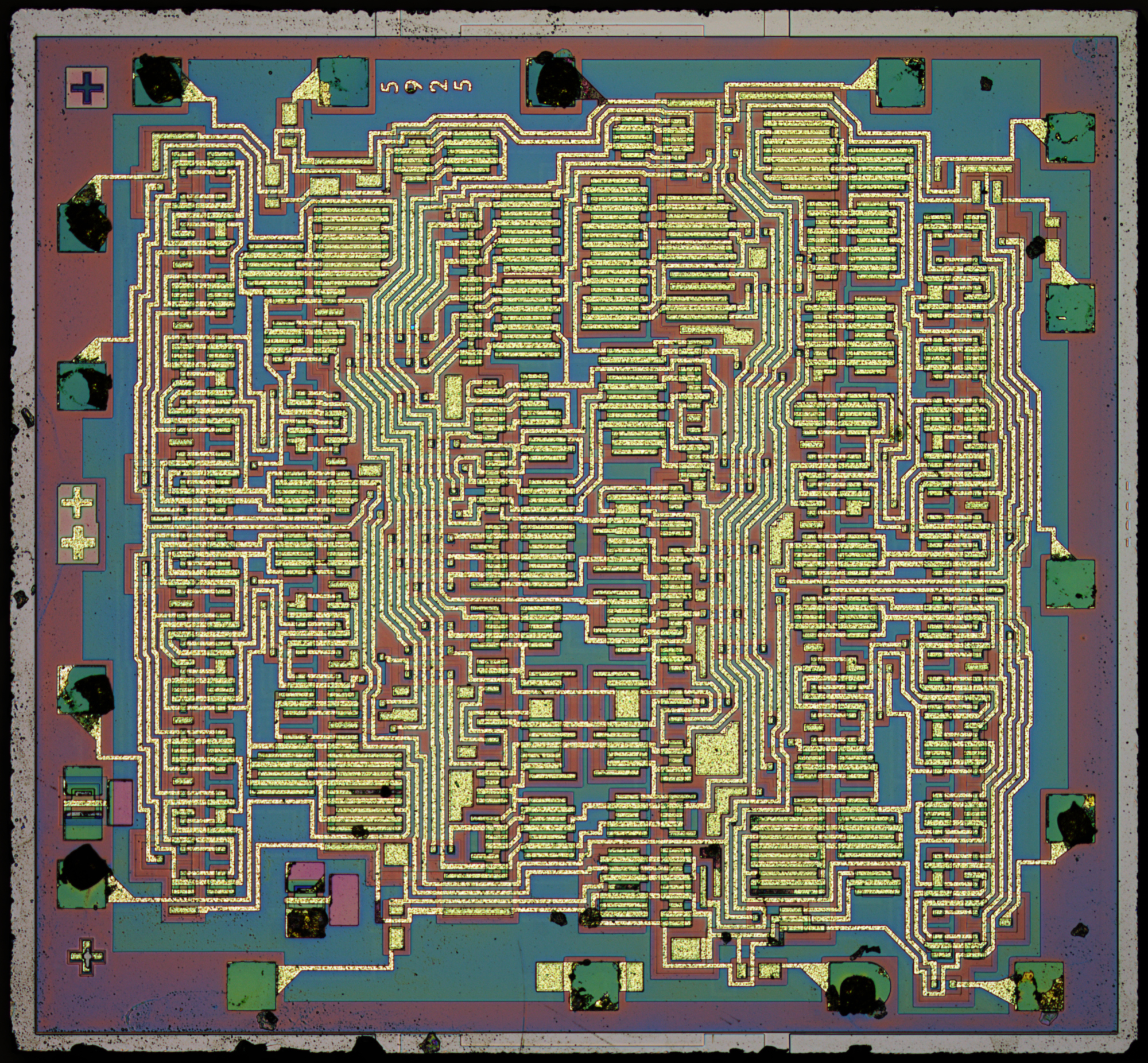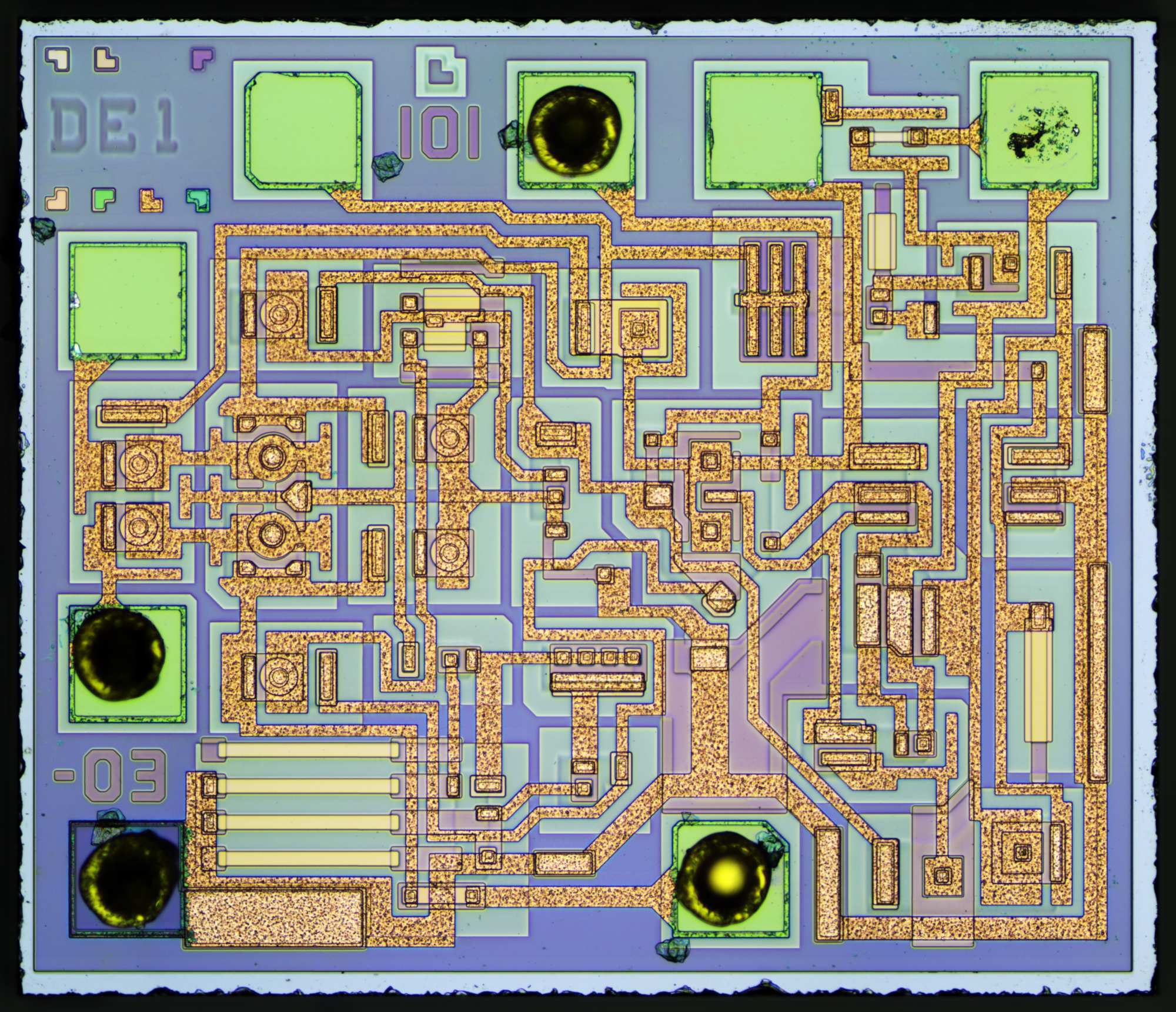July 13, 2019
July 7, 2019
July 1, 2019
June 23, 2019
June 16, 2019
Harris CD4098BE - dual monostable multivibrator : weekend die-shot
Die size 2421x1939 µm. Harris Semiconductor was acquired by Texas Instruments.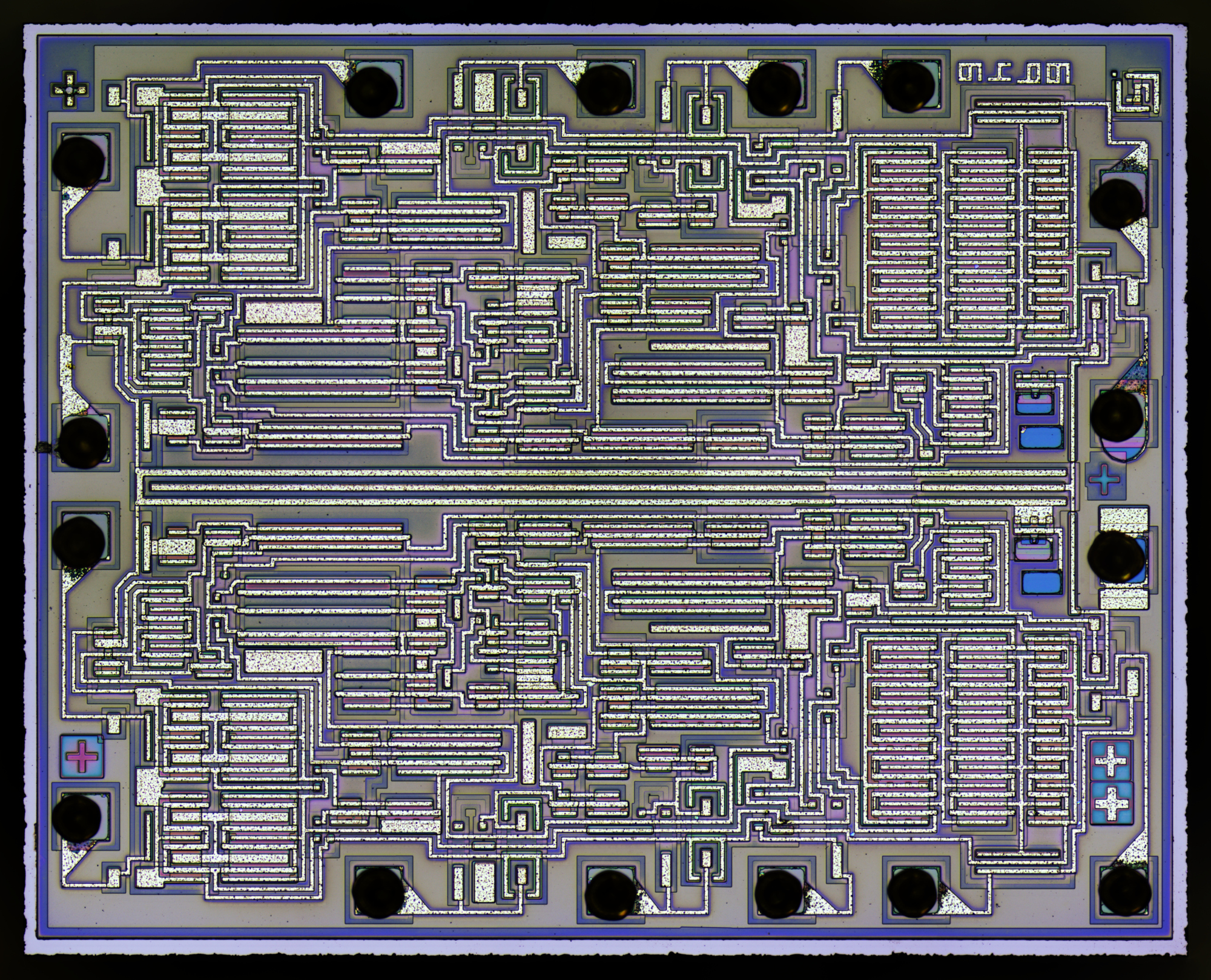
June 12, 2019
Raytheon RC4558N - general-purpose opamp : weekend die-shot
Raytheon RC4558N is a dual general-purpose opamp similar to μA741 with a slight taste of freedom. Packaged in plastic DIP.Die size 1123x1094 µm.
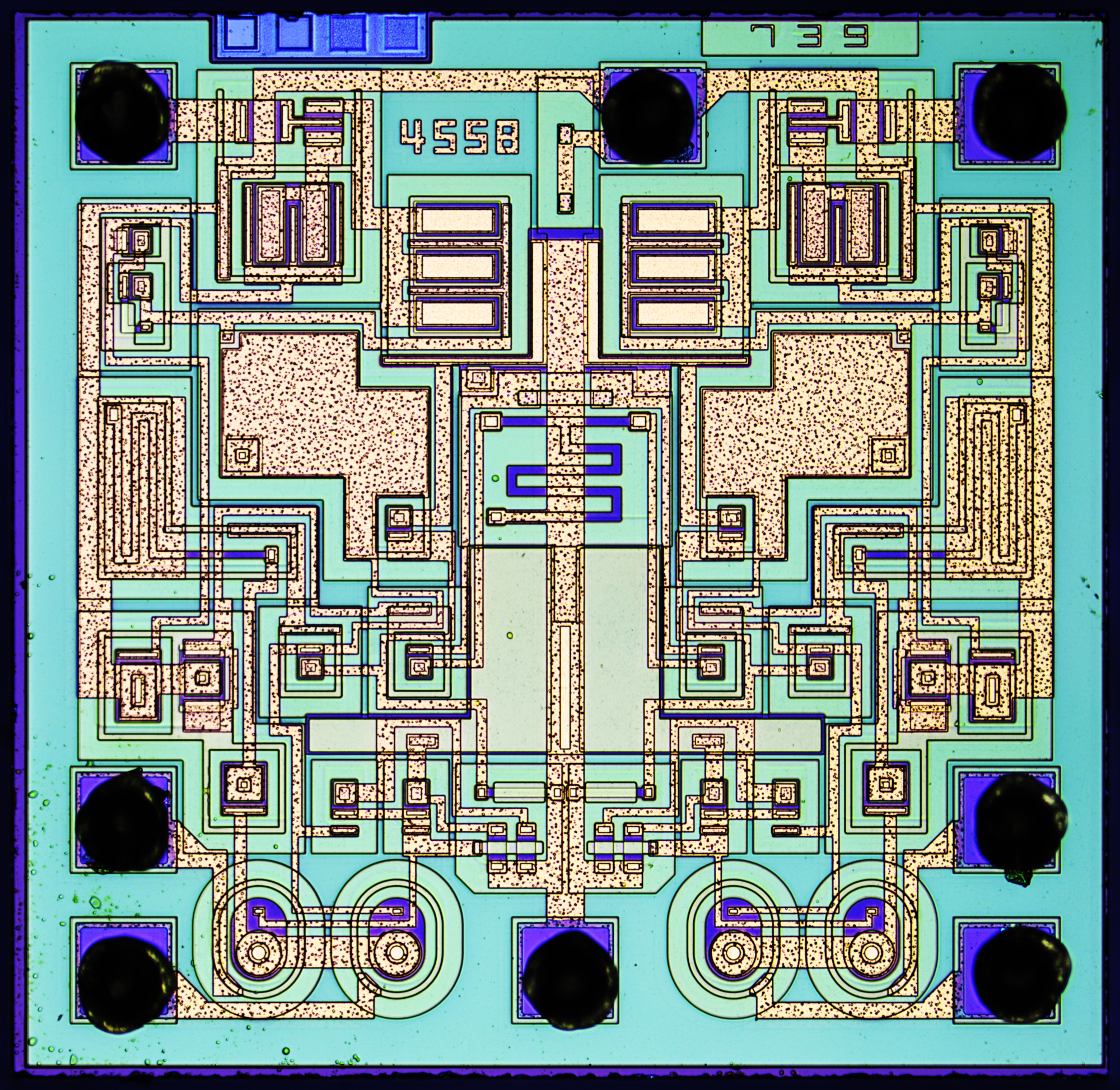
May 21, 2019
LM747CN - dual general purpose opamp : weekend die-shot
This dual opamp LM747CN had datecode 8852. Manufacturer is unclear. While some 747 designs mention that "two amplifiers share a common bias network" - here we see 2 independent identical mirrored opamps.Die size 1545x987 µm.
